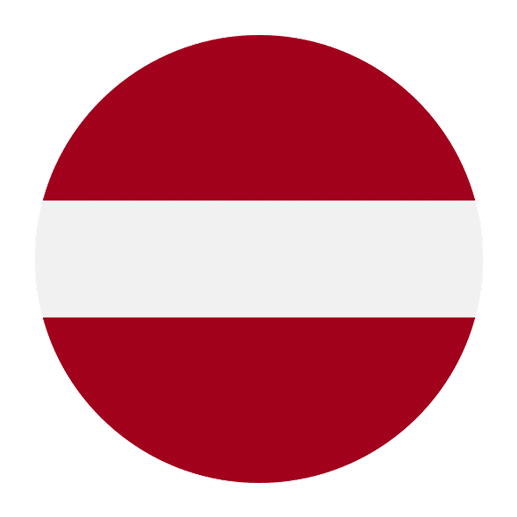Latvia, a small but culturally rich country located in the Baltic region of Northern Europe, boasts a unique language that has evolved over centuries. Latvian, part of the Baltic language group, is known for its distinct phonetic, morphological, and syntactic characteristics. However, like many languages, Latvian has not remained impervious to external influences. One of the most notable phenomena in modern Latvian is the extensive use of loanwords. This article explores the historical context, types, and contemporary relevance of loanwords in Latvian, highlighting their impact on the language and culture.
Historical Context of Loanwords in Latvian
The history of the Latvian language is intertwined with various periods of foreign domination and cultural exchange. Over the centuries, Latvia has been influenced by various neighboring countries and powers, such as Germany, Sweden, Poland, and Russia. Each of these interactions has left an indelible mark on the Latvian lexicon.
German Influence
One of the most significant sources of loanwords in Latvian is German. During the medieval period, the German-speaking Livonian Order and the Hanseatic League played crucial roles in shaping the region’s culture and language. Many administrative, legal, and commercial terms in Latvian are of German origin. For example, the Latvian word “skola” (school) is derived from the German “Schule,” and “tirgus” (market) comes from “Markt.”
Polish and Swedish Influences
Polish and Swedish rule in Latvia also contributed to the influx of loanwords. From the 16th to the 18th centuries, Polish influence introduced numerous religious and administrative terms, while Swedish rule brought in military and administrative vocabulary. Although these periods were relatively short, their linguistic impact is still evident in modern Latvian.
Russian Influence
The most recent and perhaps the most profound influence on Latvian came from Russia. During the 19th and 20th centuries, Latvia was part of the Russian Empire and later the Soviet Union. This period saw a significant influx of Russian loanwords, particularly in areas related to administration, technology, and daily life. Words like “telefon” (telephone) and “kompjūters” (computer) are clear examples of Russian influence.
Types of Loanwords in Latvian
Loanwords in Latvian can be categorized into several types based on their origin and degree of integration into the language. Understanding these categories helps to grasp the complexity and richness of the Latvian lexicon.
Direct Borrowings
Direct borrowings are words that have been adopted with little or no modification from the source language. These words often retain their original spelling and pronunciation, making them easily recognizable. Examples include “hokejs” (hockey) from English and “kafija” (coffee) from Turkish.
Adapted Borrowings
Adapted borrowings are words that have been modified to fit the phonological and morphological rules of Latvian. These modifications can include changes in spelling, pronunciation, and grammatical endings. For instance, the German word “Zeitung” (newspaper) becomes “avīze” in Latvian, and the Russian “машина” (machine) is adapted to “mašīna.”
Calques
Calques, or loan translations, are phrases or expressions that have been translated literally from the source language. This type of borrowing often occurs in idiomatic expressions and compound words. An example is the Latvian “smilšu kaste” (sandbox), which is a direct translation of the German “Sandkasten.”
Semantic Loans
Semantic loans involve borrowing the meaning of a word rather than the word itself. This type of loanword is less visible but equally significant. For example, the Latvian word “draugs” (friend) has acquired additional meanings from the Russian “друг,” including connotations of camaraderie and loyalty.
Hybrid Loanwords
Hybrid loanwords combine elements from both Latvian and the source language. These words often result from bilingual speakers mixing languages in everyday conversation. An example is “elektrovilciens” (electric train), which combines the Latvian “vilciens” (train) with the international prefix “elektro-.”
Contemporary Relevance of Loanwords in Latvian
Loanwords continue to play a vital role in the evolution of the Latvian language, reflecting ongoing cultural and technological changes. In today’s globalized world, the influence of English is particularly noteworthy.
English Influence
The dominance of English as an international lingua franca has led to a surge of English loanwords in Latvian, especially in technology, business, and popular culture. Terms like “internets” (internet), “mārketings” (marketing), and “selfijs” (selfie) have become commonplace. The pervasive use of English loanwords is not without controversy, as some linguists and purists argue that it undermines the integrity of the Latvian language.
Media and Technology
The rapid advancement of technology and the proliferation of digital media have accelerated the adoption of loanwords. New concepts and inventions often enter Latvian through English, necessitating quick linguistic adaptation. Social media platforms, software, and gadgets frequently introduce new vocabulary that Latvian speakers incorporate into their daily lives. Words like “blogot” (to blog) and “čatot” (to chat) exemplify this trend.
Youth Culture
Youth culture is another area where loanwords are particularly prevalent. Young Latvians, exposed to global trends through the internet, music, and movies, often incorporate English slang and expressions into their speech. This phenomenon reflects a broader trend of linguistic hybridity and cultural exchange. However, it also raises questions about linguistic identity and preservation.
The Impact of Loanwords on Latvian Language and Culture
The use of loanwords in Latvian has both positive and negative implications for the language and culture. Understanding these impacts is crucial for appreciating the dynamic nature of Latvian.
Enrichment of Vocabulary
Loanwords enrich the Latvian vocabulary by introducing new concepts and expressions. They enable speakers to articulate ideas and experiences that may not have native equivalents. This linguistic diversity enhances communication and fosters cultural exchange.
Challenges to Linguistic Purity
On the flip side, the influx of loanwords poses challenges to linguistic purity. Some linguists and cultural advocates argue that excessive borrowing can dilute the distinctiveness of Latvian. They emphasize the importance of preserving the language’s unique characteristics and promoting native equivalents for foreign terms.
Language Evolution
Loanwords are a natural part of language evolution. They reflect historical and contemporary interactions between cultures and societies. The adaptability of Latvian to incorporate loanwords demonstrates its resilience and capacity for growth. However, balancing this adaptability with efforts to maintain linguistic heritage remains a delicate task.
Educational Implications
The prevalence of loanwords has significant implications for language education in Latvia. Teachers and language learners must navigate a lexicon that includes a mix of native and borrowed terms. This dynamic vocabulary requires updated teaching materials and methods that address the complexities of modern Latvian.
Media and Communication
The media plays a crucial role in shaping language use and disseminating loanwords. Television, radio, newspapers, and online platforms introduce and popularize new terms. Media professionals must balance the use of loanwords with efforts to promote clear and accurate communication in Latvian.
Strategies for Managing Loanwords in Latvian
Given the ongoing influx of loanwords, it is essential to develop strategies for managing their integration into Latvian. These strategies can help maintain the language’s integrity while embracing its dynamic nature.
Promoting Native Equivalents
One effective strategy is to promote native equivalents for foreign terms. Language authorities and educators can encourage the use of Latvian words that capture the same meanings as loanwords. For example, instead of using “selfijs,” speakers could use “pašportrets” (self-portrait).
Standardization and Regulation
Language standardization and regulation play critical roles in managing loanwords. Institutions like the Latvian Language Agency (Latviešu valodas aģentūra) can provide guidelines for the appropriate use of loanwords and promote standardized vocabulary. These efforts help ensure consistency and clarity in language use.
Educational Initiatives
Educational initiatives are essential for raising awareness about the impact of loanwords and promoting linguistic preservation. Schools can incorporate lessons on the history and significance of loanwords, fostering an appreciation for linguistic diversity. Additionally, language courses can emphasize the importance of using native equivalents when possible.
Media Responsibility
The media has a responsibility to use language thoughtfully and accurately. Media professionals can set examples by using native equivalents and avoiding unnecessary loanwords. Additionally, media outlets can produce content that educates the public about the origins and implications of loanwords.
Encouraging Linguistic Creativity
Encouraging linguistic creativity can help balance the use of loanwords with the preservation of Latvian. Writers, poets, and artists can explore innovative ways to express new concepts using native elements. This creativity enriches the language and showcases its adaptability.
Conclusion
The use of loanwords in Latvian today reflects the language’s rich history and ongoing evolution. From German and Russian influences to the current dominance of English, loanwords have shaped and enriched the Latvian lexicon. While they present challenges to linguistic purity, they also offer opportunities for cultural exchange and linguistic growth.
Balancing the integration of loanwords with efforts to preserve the unique characteristics of Latvian is a complex but essential task. By promoting native equivalents, standardizing vocabulary, and fostering linguistic creativity, Latvia can navigate the dynamic landscape of language change while honoring its linguistic heritage.
In the end, the story of loanwords in Latvian is a testament to the language’s resilience and adaptability. It serves as a reminder that languages are living entities, continuously shaped by the people who speak them and the cultures they inhabit. As Latvian continues to evolve, loanwords will remain a vital part of its journey, reflecting the ever-changing tapestry of human experience.

